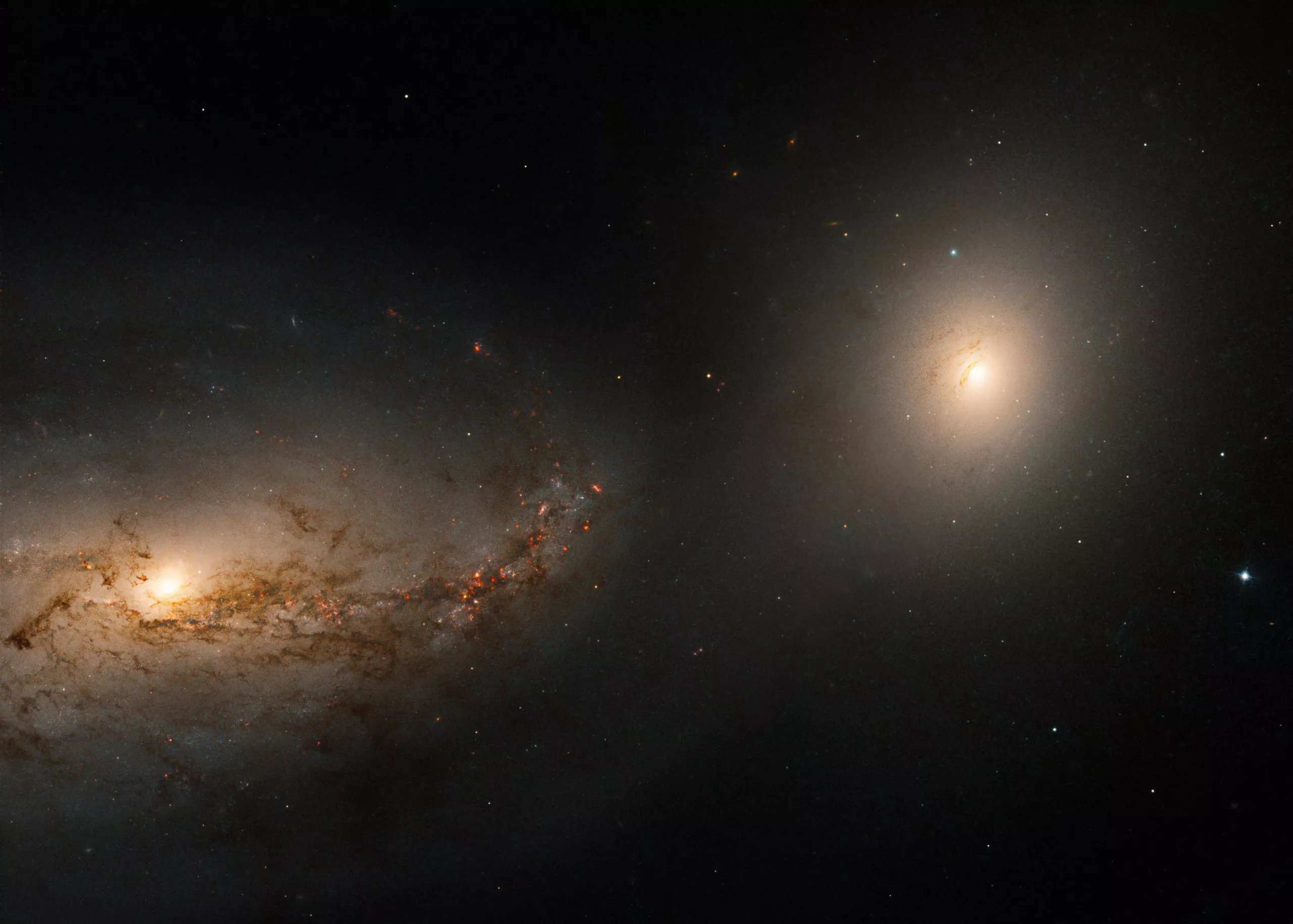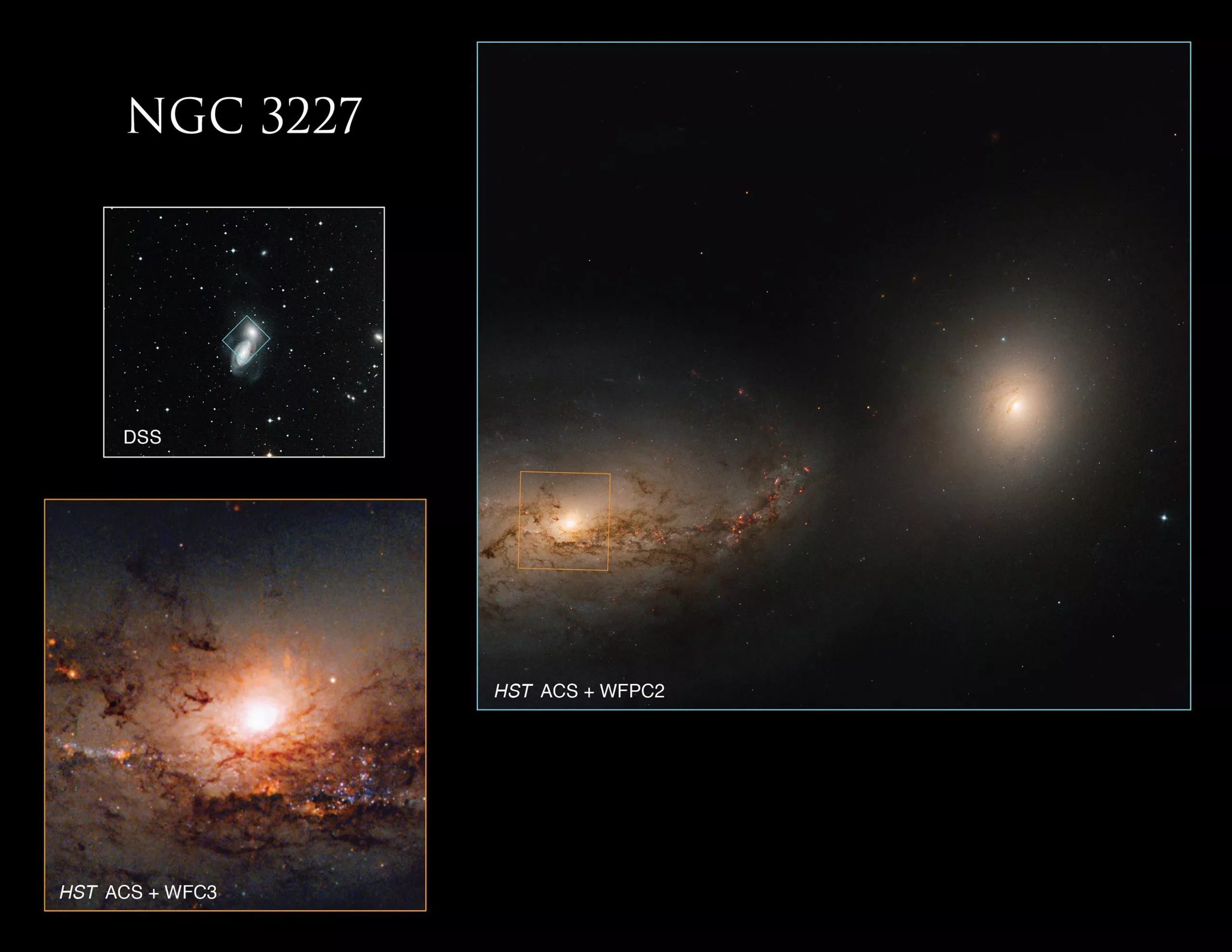NASA's Hubble Space Telescope has found that the large spiral galaxy NGC 3227 and its companion, the elliptical galaxy NGC 3226, are engaged in a chaotic gravitational dance The pair -- collectively referred to as ARP 94 -- are relatively close, 50million to 60million light-years from earth, and are located in the constellation Leo. A closer look at the region between the two galaxies reveals weak tidal flows of gas and dust, which connect the two galaxies under the action of gravity.
Access:

NGC 3227 is a Seyfert galaxy, a type with very active galactic nuclei. The core of Seyfert galaxy is a supermassive black hole. When matter spirals into the black hole, it will release a large amount of radiation along the rotation axis of the black hole and make the galaxy have active nuclei.

Hubble observed NGC 3227 and 3226 as part of a plan to measure the mass of black holes by observing the gas dynamics at the center of bright galaxy clusters. It is reported that the red in this picture represents visible red and near-infrared wavelengths of light.